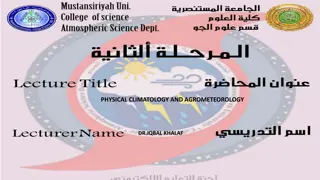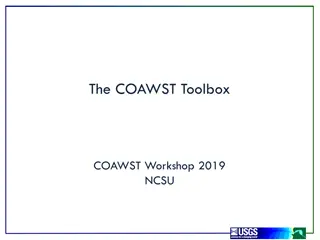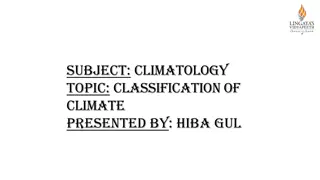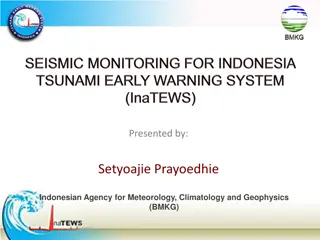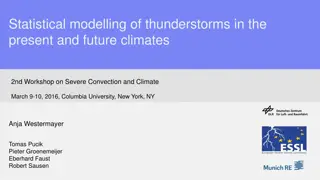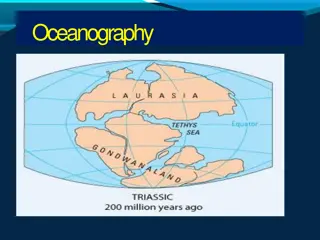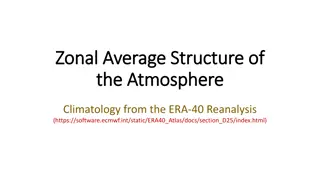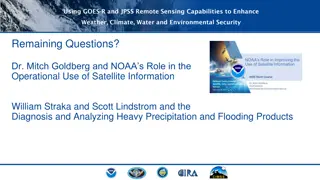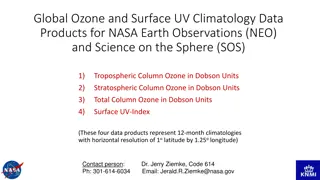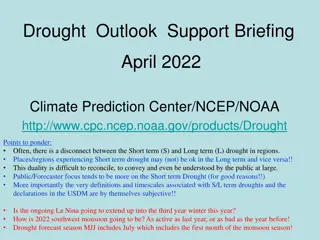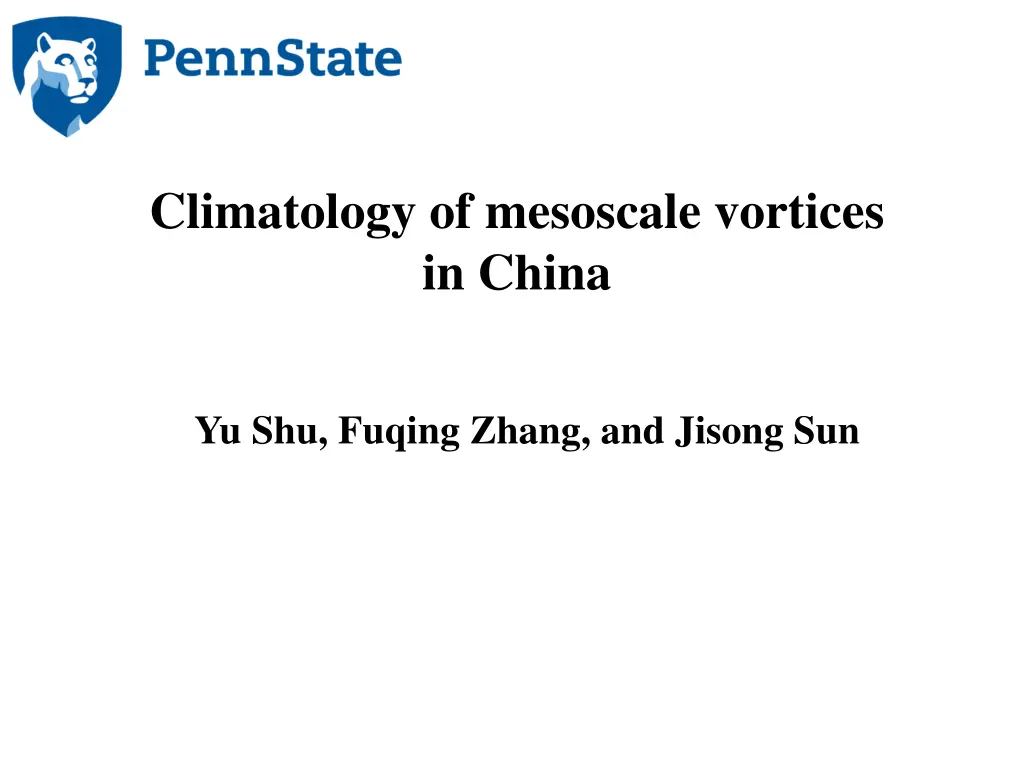
Mesoscale Vortices in China: Climatology and Statistical Analysis
Explore the climatology and statistical analysis of mesoscale vortices in China through a review of past studies, data collection methods, and statistical results from the years 2007 to 2016. The study aims to provide a robust basis for validating numerical simulations and generalizing physical characteristics of these vortices.
Download Presentation

Please find below an Image/Link to download the presentation.
The content on the website is provided AS IS for your information and personal use only. It may not be sold, licensed, or shared on other websites without obtaining consent from the author. If you encounter any issues during the download, it is possible that the publisher has removed the file from their server.
You are allowed to download the files provided on this website for personal or commercial use, subject to the condition that they are used lawfully. All files are the property of their respective owners.
The content on the website is provided AS IS for your information and personal use only. It may not be sold, licensed, or shared on other websites without obtaining consent from the author.
E N D
Presentation Transcript
Climatology of mesoscale vortices in China Yu Shu, Fuqing Zhang, and Jisong Sun
1 Review of past studies 2 Data and method 3 MV climotology 4 Composite MV 5 Summary and conclusions
Review of past studies Statistical studies of MV over US: 1. Bartels and Maddox (1991) 2. Trier et al. (2000) 3. Davis et al. (2002) 4. James and Johnson (2010) 1 Lack of high resolution data with a large time range 2 Time consuming, amounts of manual work are needed Statistical studies of MV over China: 1. Southwest vortex: Fu et al. (2014, 2015) 2. Tibetan Plateau vortex: Feng et al. (2014) 3. Dabie vortex: Fu et al. (2016) 4. Vortex on Meiyu front: Yang et al. (2010), Shen et al. (2013)
Motivation 1. Past studies are lack of a large spatial-temporal range climatology. 2. To facilitate the generalization about MV physical characteristics. To provide a statistical robust basis for the validation of numerical simulations
1 Review of past studies 2 Data and method 3 MV climotology 4 Composite MV 5 Summary and conclusions
Data and Method Data: EC-interim, 0.125o, 6h; and cmorph: 8km, 0.5h circular symmetric R<300km monotonic decrease > 4.5*10-5 Method: (1) MV at each time: DAT (2002) (2) MV track: a modified TREC (3) MV categories: By the initial situation: MCV, MSV (Mesoscale Stratiform Vortex), and MDV (Mesoscale Dry Vortex).
Region Time: 2007.01 ~ 2016.12 Region: 20N 45N, 90E 130E
1 Review of past studies 2 Data and method 3 MV climotology 4 Composite MV 5 Summary and conclusions
Statistical Results Statistics of different MV categories from 2007 to 2016 MV MCV 70.7% 23.1% 10.4% MSV MDV With- sec Without -sec Number 21053 10148 (7177) 9421 (2178) 1484 (155) 9510 11543 Intensity (10-5s-1) Radius (km) 9.2 9.8 12 8.8 7.7 10.1 8.5 189.5 198.4 200 174.3 182.3 199.8 181.0 Duration (h) Max pre. (mm/h) 11.0 11.5 10.7 9.2 13.9 8.6 14.5 22.8 7.4 3.3 27.8 3.6
Geographical distribution MV MCV MSV MDV
Formation time MV MCV MDV MSV
1 Review of past studies 2 Data and method 3 MV climotology 4 Composite MV 5 Summary and conclusions
Suface features (CAPE) Plateau MCV initiation maturity dissipation
Suface features (sp+tp) Plateau MCV initiation maturity dissipation
High level features (200: height,divergence) Plateau MCV initiation maturity dissipation 10-6s-1
Middle level features (500: height,vorticity) Plateau MCV initiation maturity dissipation 10-6s-1
Low level features (850: height,wind) Plateau MCV initiation maturity dissipation
Summary 1. A 10-year MV climatology are done, some of the basic MV characteristics are analyzed. 2. The composite of Plateau MCV are done. We get some primary results. More composite work need to be done in future days, such as the vertical structure, the role of vertical shear, as well as the differences among different composite MCVs.



